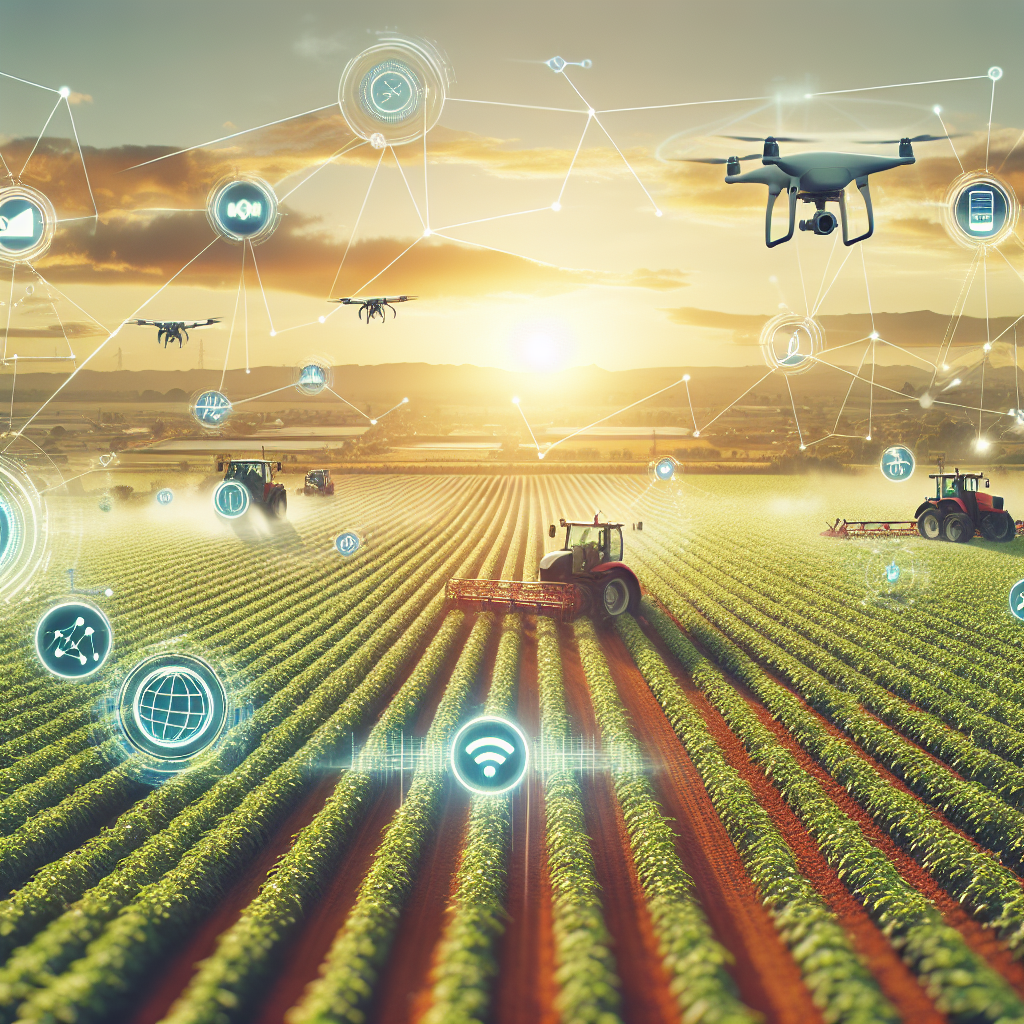In recent years, the agriculture industry has been revolutionized by the integration of artificial intelligence (AI) in smart farming practices. With the help of IoT (Internet of Things) devices and sensor technology, farmers are able to collect real-time data on weather conditions, soil quality, crop health, and more. This data is then analyzed by AI algorithms to make informed decisions on when to plant, fertilize, and harvest crops, ultimately increasing efficiency and productivity on the farm.
One of the key innovations in smart farming is the use of IoT devices to connect various sensors on the farm. These sensors can collect data on temperature, humidity, soil moisture, and even the presence of pests or diseases. This data is then transmitted wirelessly to a central hub where it is analyzed by AI algorithms. Farmers can access this data through a mobile app or web portal, allowing them to monitor their crops and make decisions in real-time.
For example, sensors placed in the soil can measure the moisture levels and nutrient content, allowing farmers to optimize their irrigation and fertilization practices. This not only saves water and reduces the use of chemical fertilizers but also ensures that crops are getting the nutrients they need to grow. Similarly, sensors placed in the field can detect the presence of pests or diseases early on, allowing farmers to take immediate action to prevent an infestation.
Another key innovation in smart farming is the use of drones equipped with AI algorithms to monitor crops from above. Drones can capture high-resolution images of the fields, which are then analyzed by AI to detect areas of stress or disease in the crops. This information can help farmers target their interventions more effectively, reducing the use of pesticides and increasing crop yields.
In addition to monitoring crops, AI is also being used to optimize the use of machinery on the farm. For example, AI algorithms can analyze data on soil conditions and weather forecasts to determine the best time to plant or harvest crops. This can help farmers maximize their yields while reducing fuel consumption and labor costs.
Overall, the integration of AI in smart farming is transforming the way we grow food. By harnessing the power of IoT devices and sensor technology, farmers are able to make data-driven decisions that increase productivity, reduce waste, and protect the environment. As technology continues to advance, we can expect even more innovations in smart farming that will help feed a growing global population sustainably.
FAQs:
Q: How does AI help farmers in smart farming practices?
A: AI helps farmers by analyzing real-time data from IoT devices and sensors to make informed decisions on planting, fertilizing, and harvesting crops. This data helps farmers optimize their practices, increase productivity, and reduce waste.
Q: What are some examples of IoT devices used in smart farming?
A: Examples of IoT devices used in smart farming include soil moisture sensors, weather stations, drones, and GPS trackers. These devices collect data on various aspects of the farm, which is then analyzed by AI algorithms.
Q: How can AI help reduce the use of pesticides in agriculture?
A: AI can help reduce the use of pesticides by detecting pests or diseases early on through sensors and drones. This allows farmers to target their interventions more effectively, reducing the need for chemical treatments.
Q: What are the benefits of using AI in smart farming?
A: The benefits of using AI in smart farming include increased productivity, reduced waste, and improved sustainability. AI helps farmers make data-driven decisions that optimize their practices and protect the environment.

